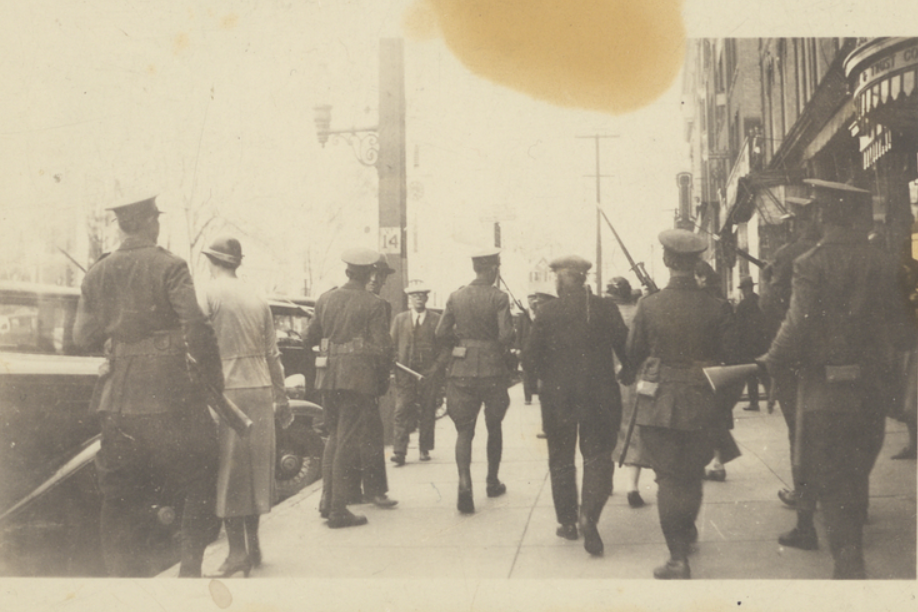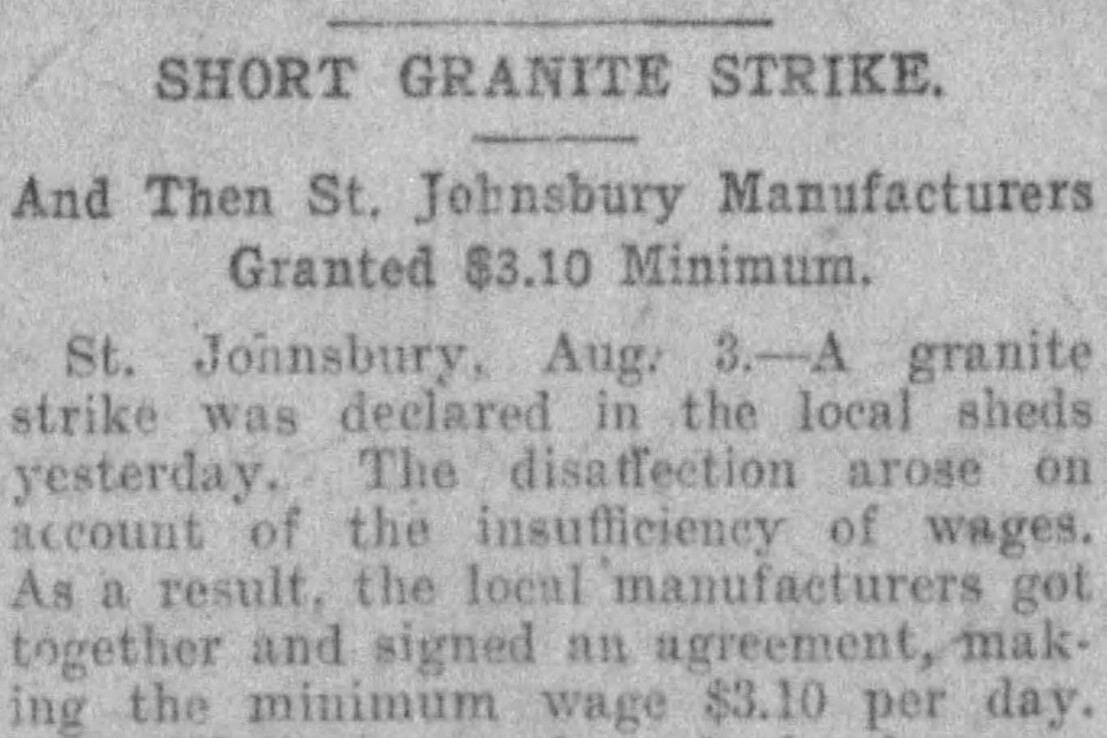Granite Worker Strikes
The mining industry drastically changed Vermont in the latter-half of the 1800s. The railroad industry allowed Vermont’s mines to export more goods. Many people emigrated from Italy to work as stone carvers. However, many granite workers were treated unfairly. Granite shed owners could change salaries without notice. Working with granite is dangerous and can cause long-term health problems. Many granite workers suffered from silicosis in their lungs and died young. But the granite shed owners made a lot of money off their workers. At its height, the city of Barre was known as, “the granite capitol of the world” due to the abundance of sheds open. Granite workers in Vermont organized labor unions to hold companies accountable.
Granite workers used various methods for their strikes. In 1910, granite sheds in St. Johnsbury initiated a strike to raise their wages to $3.10 an hour. Only one local employer didn’t sign the deal. During the 1922 Barre granite strike, a granite worker named Rinaldo Calcagni used a slide whistle to call out strike breakers. He wanted to embarrass them. Some granite shed owners tried to stop workers from organizing. They accused many Italian immigrant workers of being communists. Granite workers were part of the industrial revolution in Vermont. They transformed the state of Vermont from farmland to bustling mining towns. Granite workers organized labor unions to make sure that they were treated fairly for the dangerous work they were doing.
Learn More
Follow the links below to explore related topics.
How did Vermonters use the land in the 1910s?
Read War and Industry: Industrialized Vermont
Read Creating an Image: Labor Unrest
View an artifact from the Granite Worker Strikes
Search for Vermont Granite Strikes on Chronicling America through the Library of Congress

